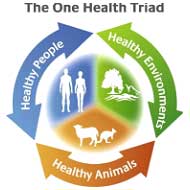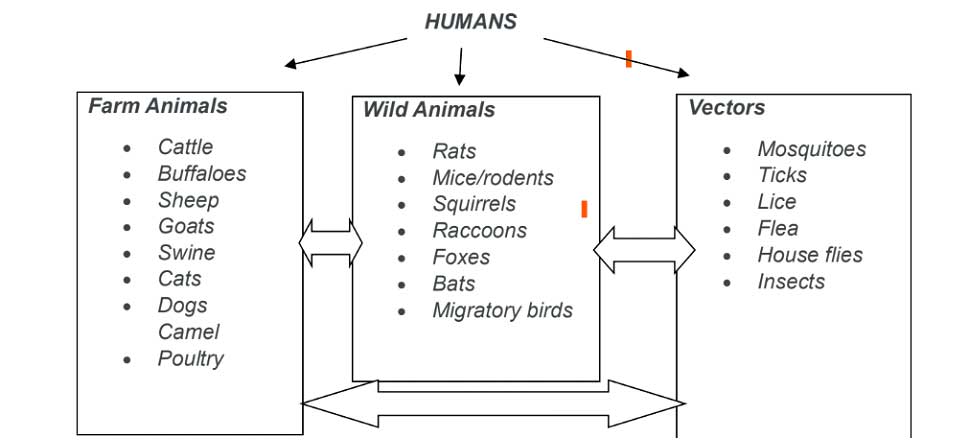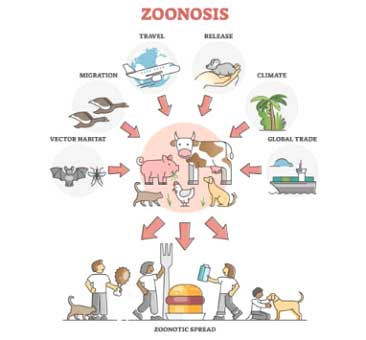Dr Niveanthini chose Emergency Medicine as her speciality. Her passion and care for treating acute emergencies surfaced during her internship. The emergency or casualty of any hospital is the most challenging place and it is the safety net for people who get wheeled in, in a life-or-death situation most of the time.
ER rooms are busy 24/7, 365 days a year. Dr Niveanthini likes performing procedures that require competency and courage, and she gets to see different challenging cases in the ER.
Handling situations with the presence of mind and speed of action give her self-satisfaction and this is yet another reason for Dr Niveanthini to choose this area of speciality. She plays a leadership role as an emergency physician.
She is a trained Bharathanatyam dancer and is recently into fitness spending most of her free time in the gym.
Today, she has written an article on zoonotic diseases. As the number of animal lovers has increased globally, this article will enlighten us more on the safety aspects for pet lovers.

Animals, Humans and the Environment – Together We Are One!
Rudolf Virchow coined the term “Zoonoses” stating that “Between animal and human medicine, there is no dividing line, nor should there be. The object is different but the experience gained constitutes the basis of all medicine.”
What Are Zoonoses?

Zoonosis (singular)/Zoonoses (plural)
Zoon = animals; noses = diseases.
Diseases and infections which are naturally transmitted between vertebrate animals and humans.
Why Are Zoonoses Important?
- Zoonoses can be a major threat to the world as it comprises of a wide variety of new and pre-existing illnesses in humans due to our close relationship with animals, both as companions and in various fields of work, especially in connection with our natural environment.
- It is a great public health concern and a direct human health hazard that may even lead to death.
- Certain zoonoses like rabies can be prevented through vaccines and other preventive measures.
- COVID-19 is a zoonotic disease of likely bat origin that has affected millions of humans along with devastating global consequences.
Who Transmits Zoonoses?

Zoonoses can be transmitted by several means such as by handling infected pets or being in contact with the surfaces touched by those infected pets and by consuming contaminated meat and dairy products, insect bites, environmental factors (air borne) and also by means of various outdoor activities such as sailing, hiking, etc.
Who Are at Risk in Humans?

Population at higher risk:
- Infants
- Children < 5
- Elderly
- Pregnant women
- People undergoing chemotherapy
- People with organ transplant
- People with HIV
Most susceptible groups include farmers, livestock owners & occupational groups who,
- Share air and space with animals
- Frequent contact with domestic and wild animals
Who Are at Risk in Animals?
- Immunosuppressed
- High yielder
- Reptiles
- Chicks/ducklings
- Puppies, kittens < 6 months
- Animals with diarrhoea
- Exotic and wild animals
Classification of Zoonoses
- Etiological agents
- Transmission cycle
- Reservoir hosts
Etiological Agents:
- Bacterial – brucellosis, leptospirosis, listeriosis, TB.
- Viral – rabies, Japanese encephalitis, monkey fever, dengue.
- Rickettsial and Chlamydial-scrub typhus, Rocky Mountain spotted fever, ornithosis.
- Mycotic/Fungal – dermatophytosis, cryptococcosis, histoplasmosis.
- Parasitic
- Protozoan – toxoplasmosis, babesiosis, leishmaniasis, African trypanosomiasis.
- Trematode/Fluke – fascioliasis, amphistomiasis, schistosomiasis.
- Cestodes/Tapeworms – cysticercosis, hydatidosis, coenuriasis.
- Nematodes/Round worms – trichinellosis, cutaneous Larva migrans.
Transmission cycle:
- Direct Zoonoses (Orthozoonoses) – Zoonotic diseases are perpetuated in nature by a single vertebrate species and transmission is either by direct or indirect contact.Ex – anthrax, rabies, tuberculosis, brucellosis.
- Cyclozoonoses – Zoonotic diseases require two or more vertebrate hosts to complete and transmission cycle of an infectious agent.Ex – Taenia solium, Taenia saginata.
- Metazoonoses (Pherozoonoses) – Both vertebrate and invertebrate species are involved in the transmission of an infectious agent. In invertebrate hosts, an infectious agent may multiply, develop or remain dormant.Ex – yellow fever, plague.
- Saprozoonoses – Zoonotic diseases require a non-animate substance for the completion of the life cycle in addition to vertebrate or invertebrate host. An infectious agent may multiply, develop or propagate in an inanimate site. These diseases are equally shared in nature by man and animals but are transmitted through inanimate objects.Ex – histoplasmosis, fungal infections.
Reservoir Hosts:
- Anthrapozoonoses – These are diseases of domestic and wild animals which occur in nature independent of man. Human beings get infected from animals in unusual circumstances, through occupational contact or food.Ex – Leptospirosis, Rift Valley fever, hydatidosis, rabies.
- Zooanthroponoses – These are diseases which normally pass from human to other vertebrate animals.Ex – Tuberculosis (human type), amoebias.
- Amphixenoses – The agent can pass from man to animal and animal to man. Ex – streptococcosis, non-host specific salmonellosis, staphylococcosis.
Prevention and Control:
- Ensure to wash hands before you sit for your meal.
- Wash your hands every time after in contact with animals (domestic and pets).
- Ensure to take your pet for regular annual visits and make sure they are vaccinated accordingly.
- Do not get attacked by animals.
- Stay away from violent and wild animals – especially when you go on a trip to a sanctuary.
- Ensure to handle the pets with safety precautions like the usage of gloves when they are sick.
- Ensure to keep your pet’s place and surroundings clean and sanitised regularly.
- Do not eat, drink and touch your face and mouth after being in close contact with animals.
- Check for ticks and fleas when you are outdoor.
- Use of insect repellents to stay flea and mosquito free.
Conclusion:
The severity of zoonotic diseases depends on the nature of the illness. They are either treatable or can even end up with serious long-term and fatal conditions. So, whenever in doubt, please do avoid self-medications and try to approach your nearby physician as early as possible to seek medical advice. Ensure to take preventive measures wherever needed.
The implementation of ONE HEALTH measures is highly recommended for the effective prevention and control of zoonoses.

Dr. T. Niveanthini Arun
Consultant – Emergency Medicine
Kauvery Hospital Chennai

